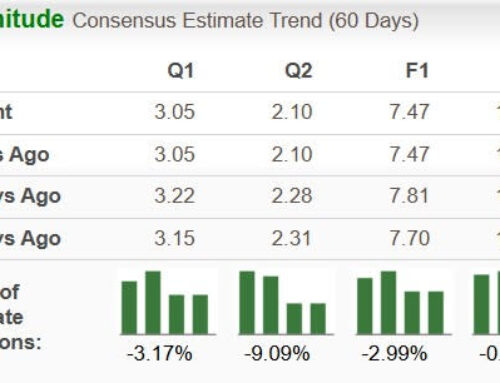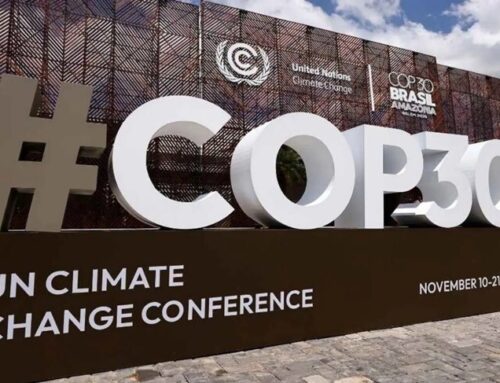Opinion: Can investing ever be ethical?
November 24, 2025
At a college like ours, where social justice, global citizenship and critical thinking are central, the question of whether investing can be ethical isn’t abstract. On one hand, investing is often framed as simply “making money.” On the other hand, many in our generation want to make financial choices that reflect our values.. That tension has given rise to frameworks like environmental, social and governance (ESG) investing and socially responsible portfolios. But beneath the surface, a deeper question remains: What does it actually mean to invest ethically? And how might a Grinnellian, still learning across economics, ethics and global systems, approach that question thoughtfully?
ESG investing is a strategy that looks at companies not only through the lens of financial performance but also evaluates them based on their environmental and social responsibility. For example, does it work to reduce pollution or address climate risk? How does it treat workers and supply-chain partners? Does it maintain transparent and accountable governance? ESG frameworks encourage investors to consider long-term stability, sustainability, and inclusion — not just short-term profit.
The way people think about investing is shifting. Many of us grew up hearing that the right approach was simply to “invest in an S&P 500 index fund and forget about it.” But for people who view investing as intertwined with larger global concerns, it can feel important to consider more than just returns. ESG investing has become increasingly mainstream, and sustainable assets now make up a considerable portion of global capital markets. That means young investors today can ask layered questions: not only “will this asset grow?” but “should it grow?” and “who benefits, and who bears the cost?”
Ethical investing is complicated. Directing capital to firms that seek to reduce environmental harm, strengthen governance, or promote fair treatment can help align financial goals with broader social aims. Yet definitions and standards for “ethical” investing vary, and some funds have been criticized for “greenwashing,” presenting themselves as sustainable without meaningful operational change. Ethical investing thus requires ongoing scrutiny and an awareness that transparency and accountability remain uneven across markets.
From a broader perspective, one might wonder which companies or regions are linked to extractive or unsustainable practices and which ones are working toward more equitable outcomes. Some investors avoid firms criticized for benefiting from historical inequities or environmental harm. Others actively seek opportunities that support responsible resource management, labor rights, and local development. Ethical investing becomes less about perfection and more about thoughtful participation — using capital to support systems one believes are more just or sustainable.
As students in the liberal arts, Grinnellians learn to incorporate ethical reflection into analytical reasoning. Even a modest portfolio can weigh financial return against social betterment. For instance, funds such as the iShares MSCI KLD 400 Social ETF (DSI) make use of ESG screening in order to align investments with goals of sustainability. Or investors might research companies’ supply chains and labor practices and governance structures, or investigate how international investments affect local communities. There will always be trade-offs when investing ethically, but beginning a dialogue about these questions creates habits that will serve you well when making future financial decisions. To see how ethical investing might look in practice, here’s a simple, diversified ESG-oriented portfolio for a young investor. Like in my previous article “How to Actually Invest as a College Student,” this is for educational purposes only and is not investment advice — but it does show one way someone might build a portfolio that reflects both financial and ethical considerations:
Twenty percent in a U.S. ESG equity fund: For example, the iShares MSCI USA ESG Select ETF (SUSA) tracks large-and mid-cap U.S. companies that have been screened for their environmental, social, and governance performance. It excludes companies involved in controversial industries such as arms or tobacco and favors companies with strong labor and sustainability policies.
Fifteen percent in an international ESG equity fund (e.g., Fidelity International Sustainability Index Fund — FNIDX): Globally diversified but contributes to sustainable development around the world. Screens non-U.S. companies for environmental and labor standards while continuing exposure to developed and emerging markets.
Ten percent in a sustainable bond fund: This would add stability to the portfolio, including issuers with strong governance and environmental policies while excluding those with large carbon footprints or highly controversial practices.
Ten percent to a renewable energy or clean-tech ETF: For example, the iShares Global Clean Energy ETF — ICLN, which invests in companies that are leading the transition to low-carbon energy. Higher volatility in these names is expected, but for the long-term investor, significant growth can be achieved.
Ten percent to a sustainable real estate or infrastructure fund: Real estate touches communities and the environment. ESG-oriented funds place an emphasis on energy efficiency, sustainable building practices, and positive community outcomes.
Five percent in a community development or impact investing vehicle: For example, Calvert Community Investment Notes, or CDFI funds, support affordable housing, small businesses and local projects, illustrating how finance can have direct social impact.
Ten percent in a cash or money market fund — for example, Fidelity Government Money Market Fund — SPAXX This maintains liquidity for flexibility. ESG-screened versions allow short-term holdings to remain values-aligned.
Twenty percent in an ESG-focused growth fund: for example, TIAA-CREF Social Choice Equity Fund — TISCX. This combines diversified exposure to U.S. and global equities with ESG criteria for a core long-term growth holding while maintaining values-based screening.
The above example illustrates that ethical investment is not about giving up diversification or financial discipline but rather adding an additional layer of reflection. Blending broad-market ESG funds with thematic ones, investors can balance growth potential against ethical intent.
For Grinnellians, it’s less about creating the “perfect” sustainable portfolio and more about asking profound questions about where our capital goes and what it enables. Let the same curiosity and critical thought that characterizes academic discussions frame financial decisions. Ethical investment isn’t about abstaining from markets but rather about knowingly and transparently participating in them. Allow your portfolio to reflect not only your goals for growth but also your hopes for fairness, sustainability and dignity within the systems it touches. Your investments don’t just sit — they move. And with reflection, that movement can align with a vision of a better world.
Peyton Williams, a junior studying economics and religious studies, writes on financial markets and personal wealth strategies. He holds the SIE and Series 66 licenses through the Financial Industry Regulatory Authority and the Accredited Asset Management Specialist professional designation through the College for Financial Planning, a Kaplan-Company.
Search
RECENT PRESS RELEASES
Related Post




